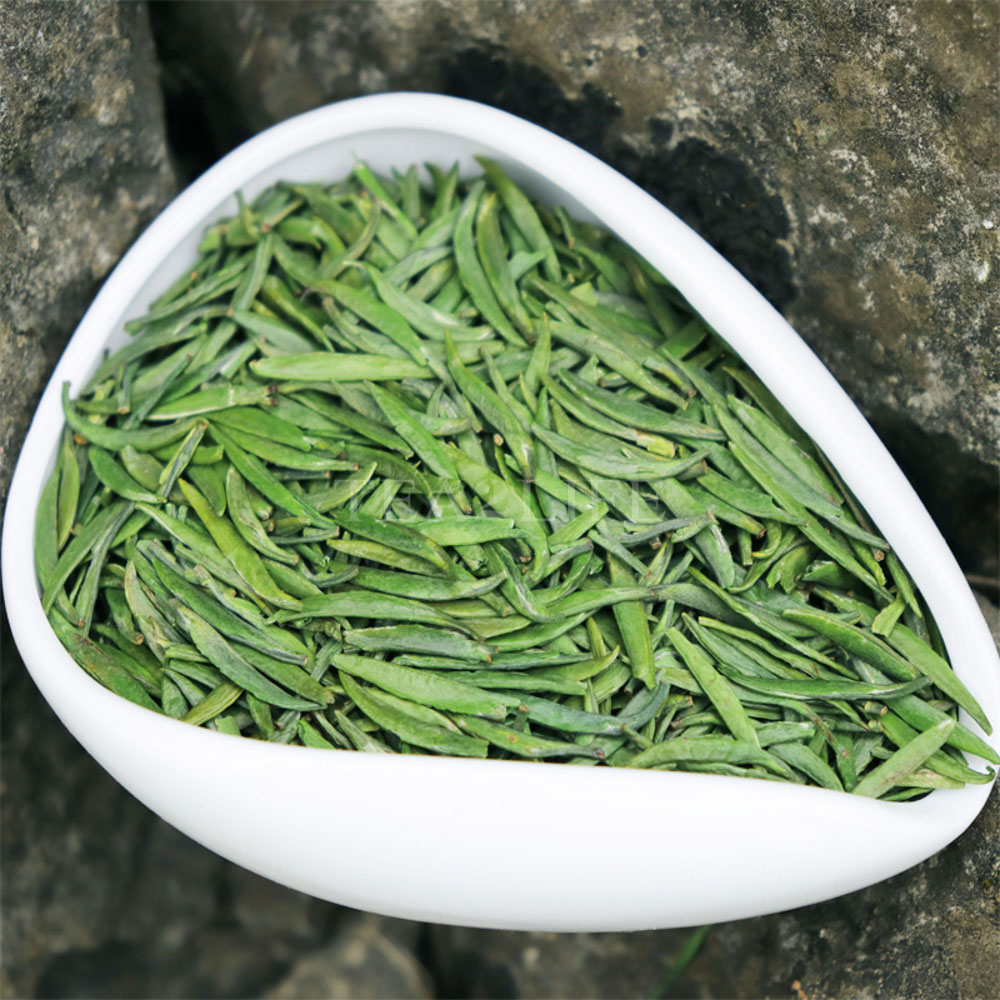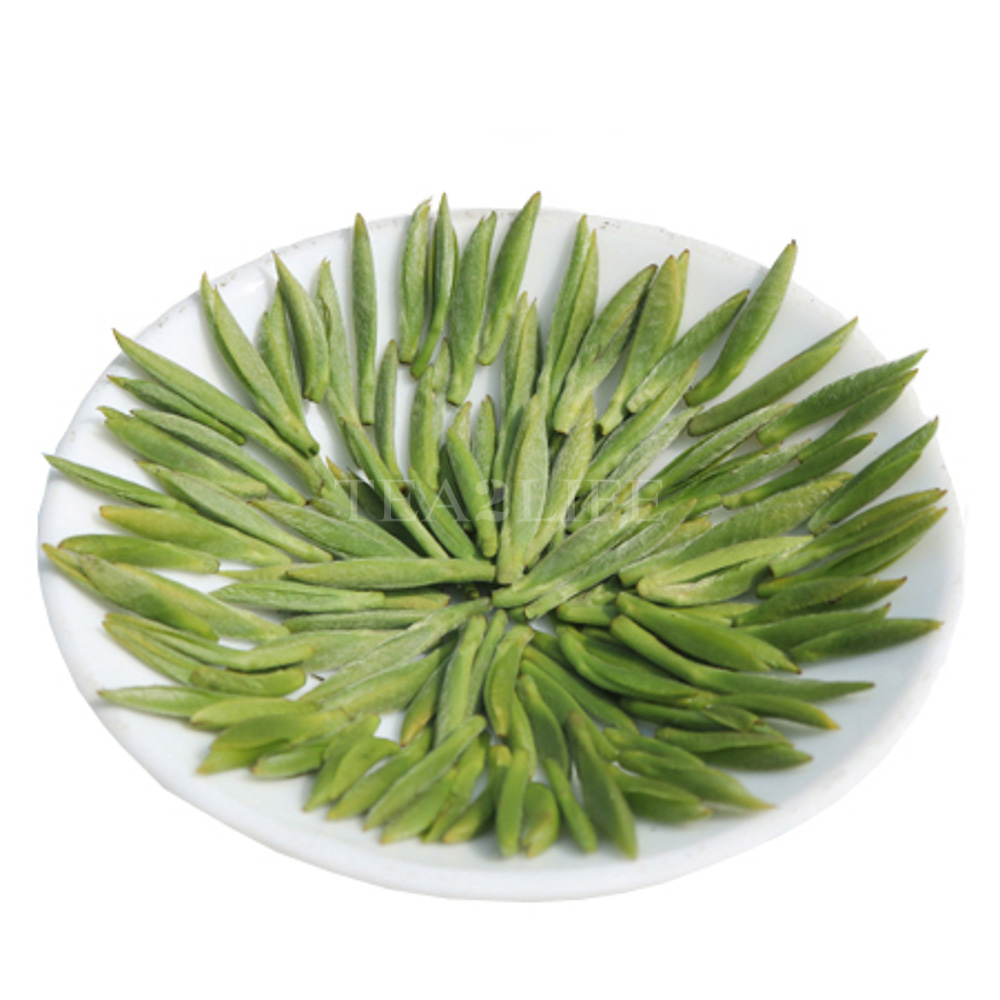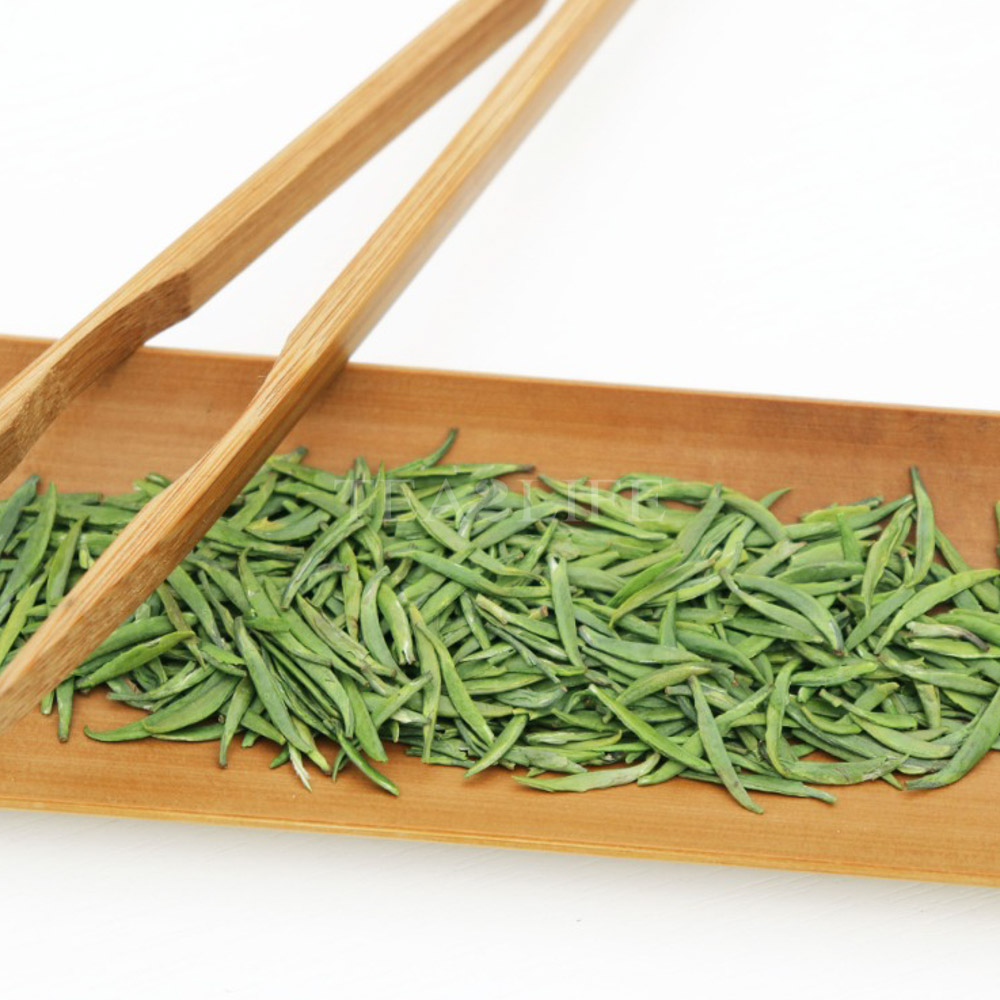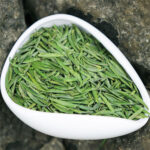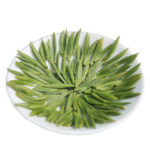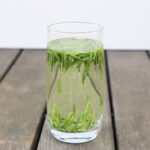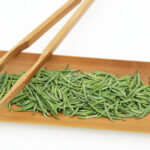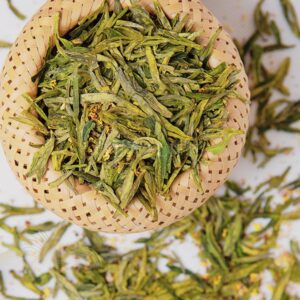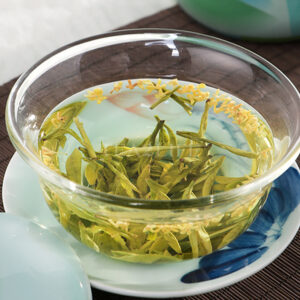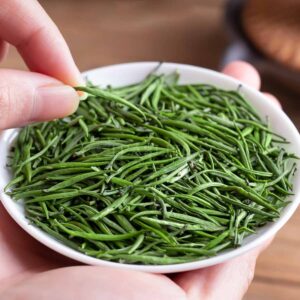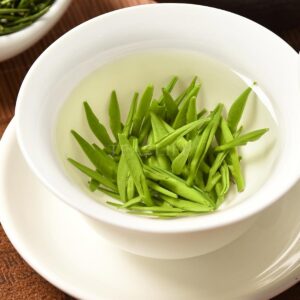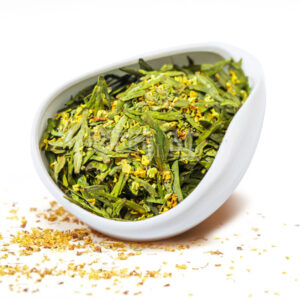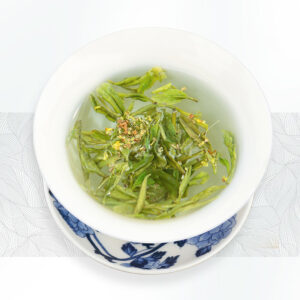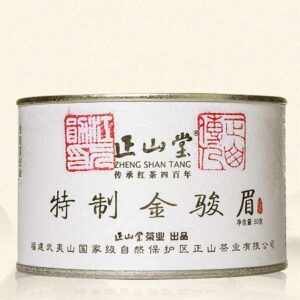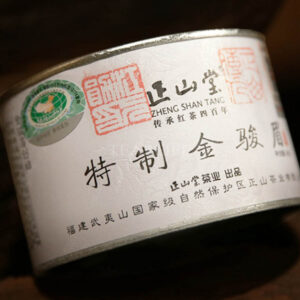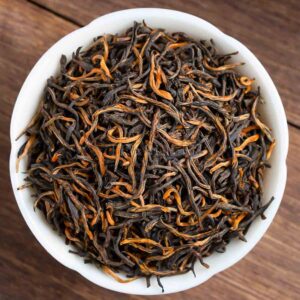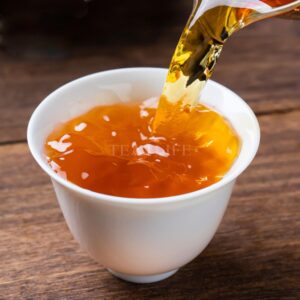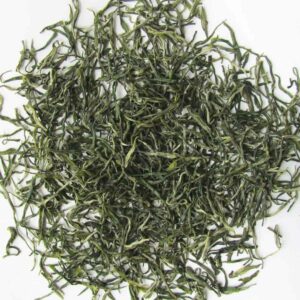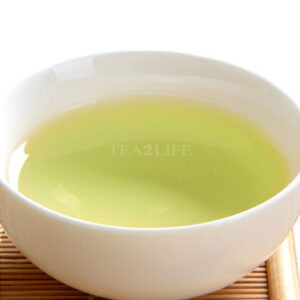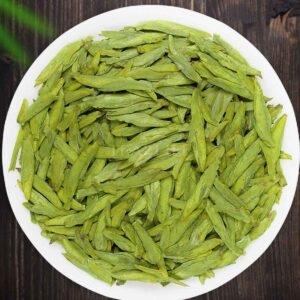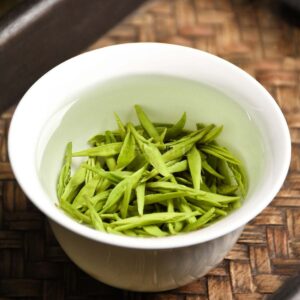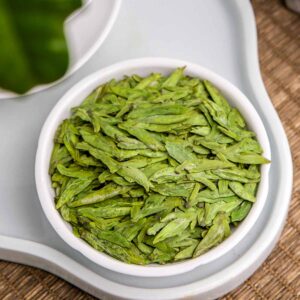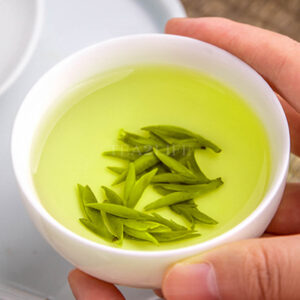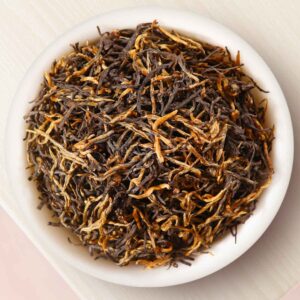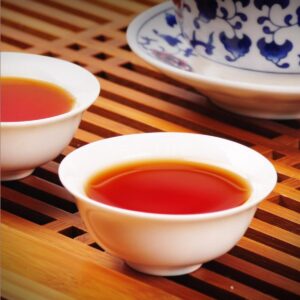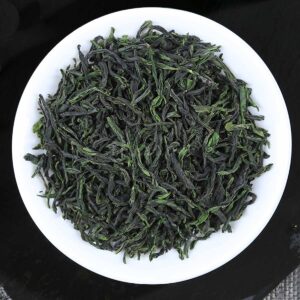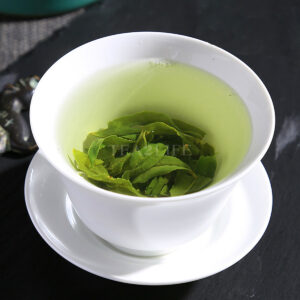| Variation | |
|---|---|
| Origin | |
| Processing | |
| Recommeded Brewing Temp. | |
| Recommended Teaware |
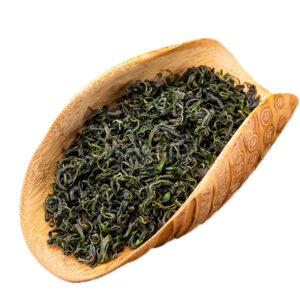
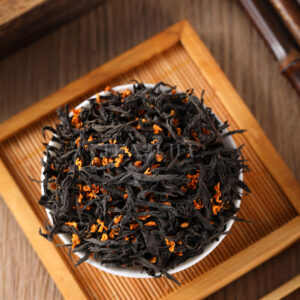
Emei Queshe
US $60.00 – US $300.00
Emei Queshe originates from Mount Emei at an altitude of 800-1200 meters, the sprouts of Queshe tea are distinct and the color is green and fresh. The dry leaves are flat and straight, oily green and shiny, the tea color is green and clean, fresh and sweet, the leaves are soft and bright, and the fat is tender and even, like the tip of a bird’s tongue.
Related products
Superior Osmanthus Fragrans Longjing
Guizhou Queshe
Guizhou Queshe 贵阳雀舌 is grown in Guizhou. “Que” (雀) means sparrow and “She” (舌) refers to the shape resembling a sparrow's tongue. It is a premium bud tea roasted with tender buds and its fragrance is very unique and rich. The shape is flat and smooth, resembling sunflower seeds, the taste is mellow and refreshing, the aftertaste is sweet, and the soup color is bright yellow and green. The price is high because of the small output
Osmanthus Fragrans Longjing
Zhengshantang Special Tea
Jinjunmei Tea
Emei Snow Bud Tea (Maojian)
Longjing Tea Type B
Longjing Tea Type A
Keemun Tea
Lu’an Melon Seed Tea Type C
Lu'an Guapian Tea 六安瓜片 is grown in Anhui, which literally translates to “Lu'an Melon Seed tea”. Tea has been produced since 1905 and has a history of over 100 years. It is one of the ten best famous teas in China. Lu'an Melon Seed Tea uses the second leaf on the branch. Each leaf's central vein is removed and the leaves are pan-fried.
Among all the teas in the world, Lu'an Guapian is the only tea without buds and stems, made from a single leaf. The stems have been removed during the production process to ensure that the tea has a strong but not bitter taste and fragrant but not astringent.
